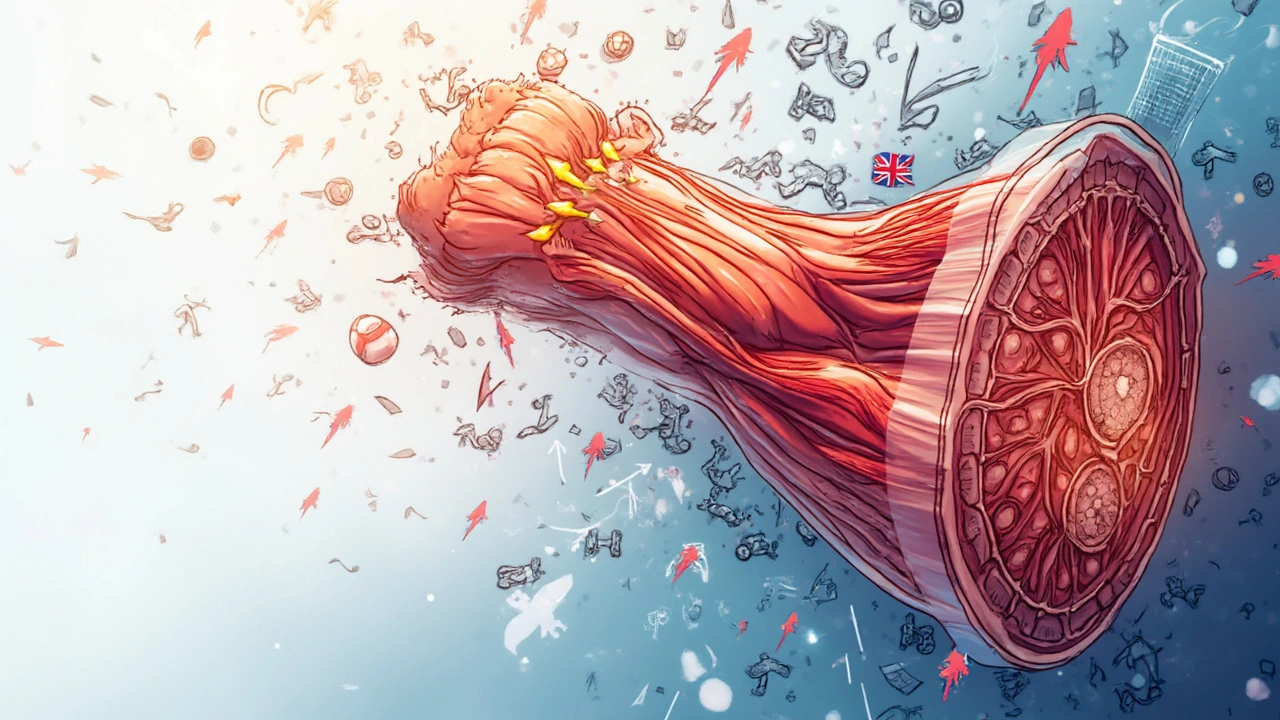Fitness Recovery: Practical Steps to Bounce Back Faster
Want to get stronger without burning out? Recovery isn’t optional — it’s the engine that turns hard work into real gains. Treat recovery like training: plan it, track it, and use the right tools. Skip the guesswork and use these clear steps to come back quicker after tough sessions.
Daily basics that actually work
Sleep first. Aim for consistent nights of 7–9 hours. Deep sleep helps your body repair muscle and balance hormones. Hydration matters too — drink through the day, not just after training. Simple rule: sip water every hour and add electrolytes if you sweat a lot.
Eat to repair. After a tough workout, get a mix of protein and carbs within two hours. Think grilled chicken with rice, yogurt and fruit, or a smoothie with whey or plant protein and a banana. Omega-3 fats (from fish, walnuts, or supplements) help reduce inflammation and speed recovery, so add them regularly.
Move gently. Active recovery is low-intensity movement like walking, easy cycling, or a short mobility session. Fifteen to thirty minutes the day after a heavy workout flushes metabolites and reduces stiffness. Avoid intense training on consecutive hard days; swap in technique work or joint-friendly cardio.
Targeted tools: massage, mobility, and cold/heat
Massage helps. Sports massage, myofascial release, and neuromuscular techniques all loosen tight spots and improve blood flow. Even self-massage with a foam roller or massage ball works if you do it for 5–10 minutes on tight areas. Focus on breath while you roll — it makes tissues relax faster.
Stretch and mobilize. Short mobility routines that target hips, shoulders, and ankles keep your movement patterns healthy. Use dynamic moves before workouts and gentle static stretches afterward. For stubborn tightness, add a few minutes of controlled breathing with each stretch.
Use heat and cold smartly. Ice reduces acute swelling; use it for 10–15 minutes after injury or very inflamed joints. Heat loosens tight muscles before mobility or massage. Contrast (short cold, then warm) can wake circulation for sore legs after long runs.
Track recovery like training. Note sleep quality, soreness, and mood in a simple log or app. Heart rate variability (HRV) and resting heart rate are useful if you want data — small drops in HRV or high resting heart rate can mean you need an easier day.
Practical routine you can try tomorrow: get 7–9 hours sleep, drink steadily, eat a protein + carb meal after training, do 20 minutes of easy movement the next day, and spend 10 minutes on self-massage for the tightest area. Repeat this pattern and you’ll train more consistently with fewer setbacks.
Recovery frees results. Train hard, recover smart, and you’ll see progress without the pain-and-burnout loop.

Unlocking Workout Success with Sports Massage Techniques
Sports massage is more than just a luxury for athletes; it's a powerful tool for anyone looking to maximize their workout results. By reducing muscle tension, improving circulation, and speeding up recovery, sports massage can enhance performance and prevent injuries. This article explores the benefits of sports massage, offers practical tips for incorporating it into your routine, and highlights how it can lead to more effective workouts.

Experience the Healing Power of Stone Therapy
Aug, 18 2023



